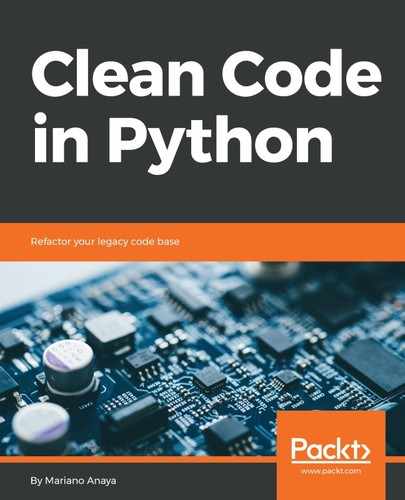We know that tests are the formal verification method we have to ensure that our code is correct. And what makes sure that the test is correct? The production code, you might think, and yes, in a way this is correct, we can think of the main code as a counter balance for our tests.
The point in writing unit tests is that we are protecting ourselves against bugs, and testing for failure scenarios we really don't want to happen in production. It's good that the tests pass, but it would be bad if they pass for the wrong reasons. That is, we can use unit tests as an automatic regression tool—if someone introduces a bug in the code, later on, we expect at least one of our tests to catch it and fail. If this doesn't happen, either there is a test missing, or the ones we had are not doing the right checks.
This is the idea behind mutation testing. With a mutation testing tool, the code will be modified to new versions (called mutants), that are variations of the original code but with some of its logic altered (for example, operators are swapped, conditions are inverted, and so on). A good test suite should catch these mutants and kill them, in which case it means we can rely on the tests. If some mutants survive the experiment, it's usually a bad sign. Of course, this is not entirely precise, so there are intermediate states we might want to ignore.
To quickly show you how this works and to allow you to get a practical idea of this, we are going to use a different version of the code that computes the status of a merge request based on the number of approvals and rejections. This time, we have changed the code for a simple version that, based on these numbers, returns the result. We have moved the enumeration with the constants for the statuses to a separate module so that it now looks more compact:
# File mutation_testing_1.py
from mrstatus import MergeRequestStatus as Status
def evaluate_merge_request(upvote_count, downvotes_count):
if downvotes_count > 0:
return Status.REJECTED
if upvote_count >= 2:
return Status.APPROVED
return Status.PENDING
And now will we add a simple unit test, checking one of the conditions and its expected result:
# file: test_mutation_testing_1.py
class TestMergeRequestEvaluation(unittest.TestCase):
def test_approved(self):
result = evaluate_merge_request(3, 0)
self.assertEqual(result, Status.APPROVED)
Now, we will install mutpy, a mutation testing tool for Python, with pip install mutpy, and tell it to run the mutation testing for this module with these tests:
$ mut.py
--target mutation_testing_$N
--unit-test test_mutation_testing_$N
--operator AOD `# delete arithmetic operator`
--operator AOR `# replace arithmetic operator`
--operator COD `# delete conditional operator`
--operator COI `# insert conditional operator`
--operator CRP `# replace constant`
--operator ROR `# replace relational operator`
--show-mutants
The result is going to look something similar to this:
[*] Mutation score [0.04649 s]: 100.0%
- all: 4
- killed: 4 (100.0%)
- survived: 0 (0.0%)
- incompetent: 0 (0.0%)
- timeout: 0 (0.0%)
This is a good sign. Let's take a particular instance to analyze what happened. One of the lines on the output shows the following mutant:
- [# 1] ROR mutation_testing_1:11 :
------------------------------------------------------
7: from mrstatus import MergeRequestStatus as Status
8:
9:
10: def evaluate_merge_request(upvote_count, downvotes_count):
~11: if downvotes_count < 0:
12: return Status.REJECTED
13: if upvote_count >= 2:
14: return Status.APPROVED
15: return Status.PENDING
------------------------------------------------------
[0.00401 s] killed by test_approved (test_mutation_testing_1.TestMergeRequestEvaluation)
Notice that this mutant consists of the original version with the operator changed in line 11 (> for <), and the result is telling us that this mutant was killed by the tests. This means that with this version of the code (let's imagine that someone by mistakes makes this change), then the result of the function would have been APPROVED, and since the test expects it to be REJECTED, it fails, which is a good sign (the test caught the bug that was introduced).
Mutation testing is a good way to assure the quality of the unit tests, but it requires some effort and careful analysis. By using this tool in complex environments, we will have to take some time analyzing each scenario. It is also true that it is expensive to run these tests because it requires multiples runs of different versions of the code, which might take up too many resources and may take longer to complete. However, it would be even more expensive to have to make these checks manually and will require much more effort. Not doing these checks at all might be even riskier, because we would be jeopardizing the quality of the tests.
